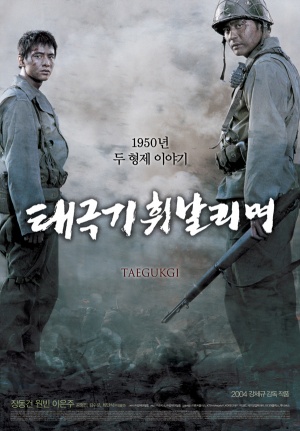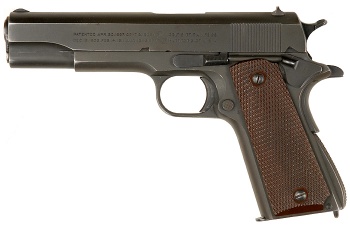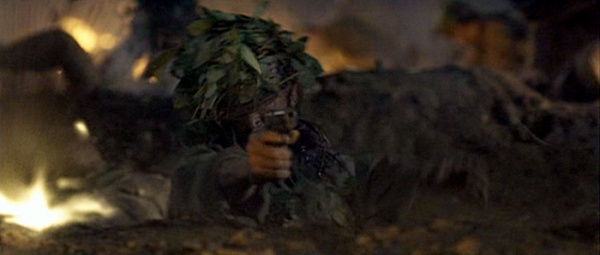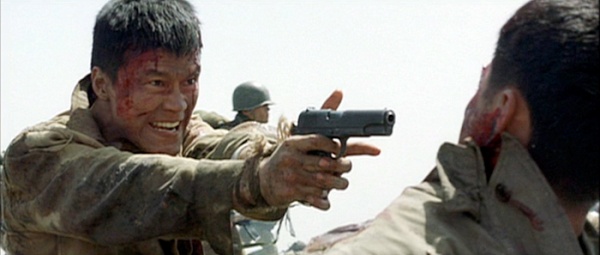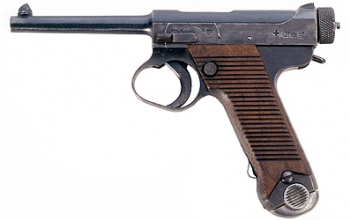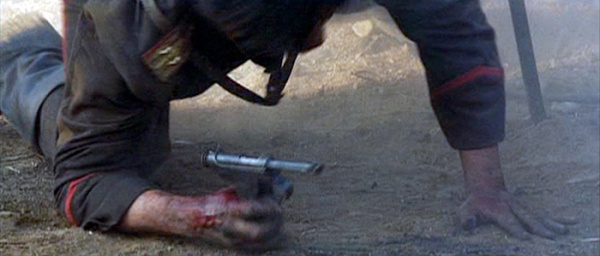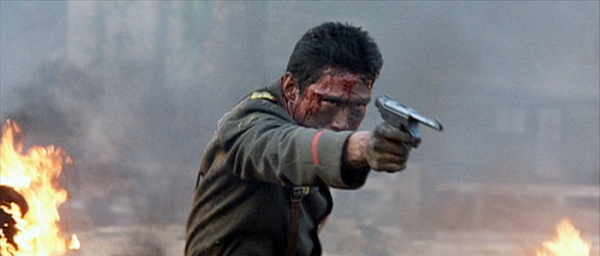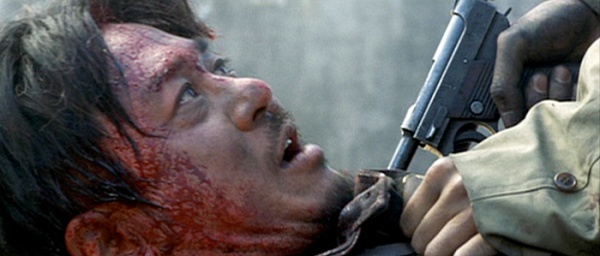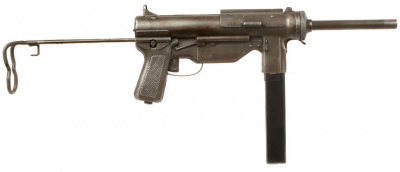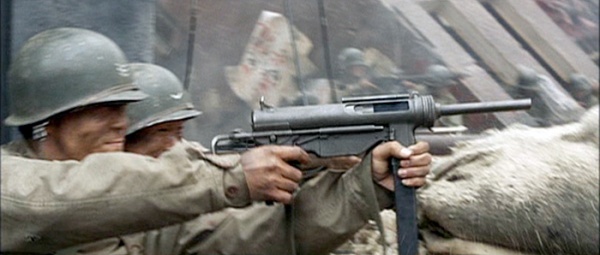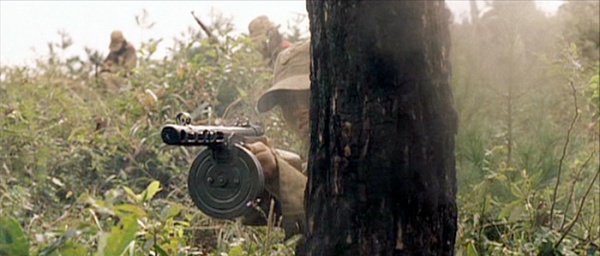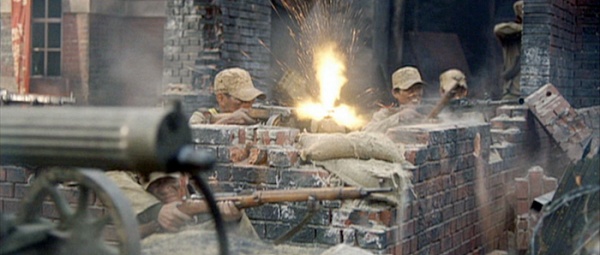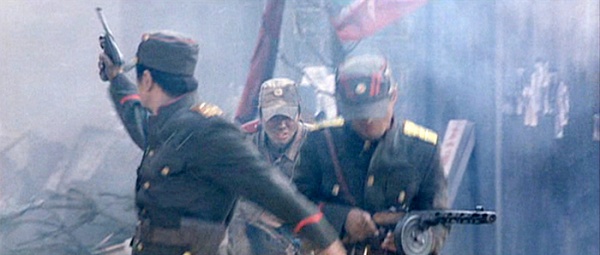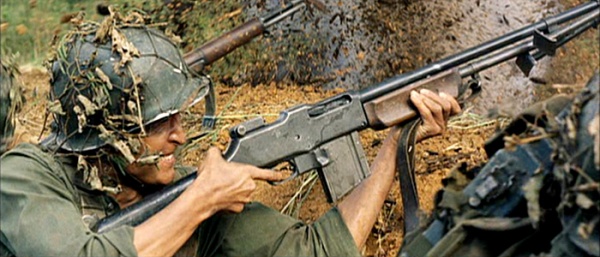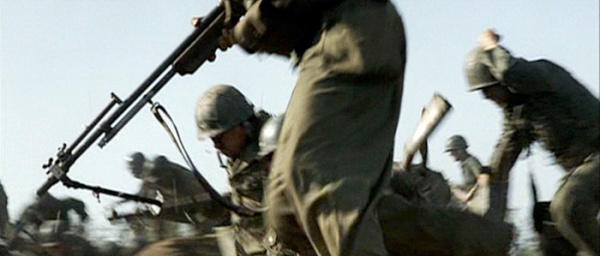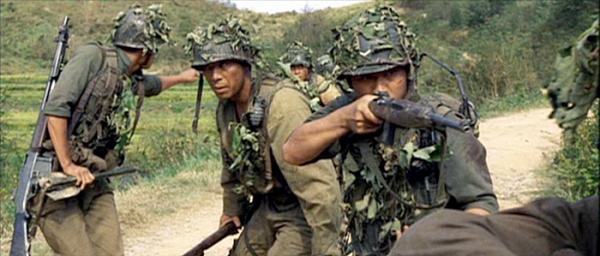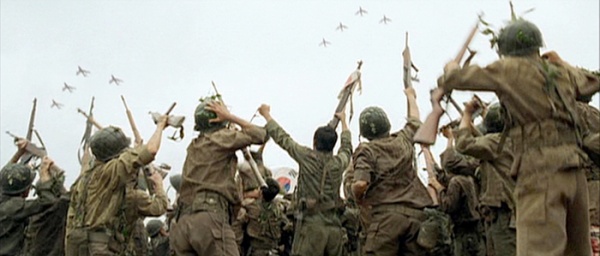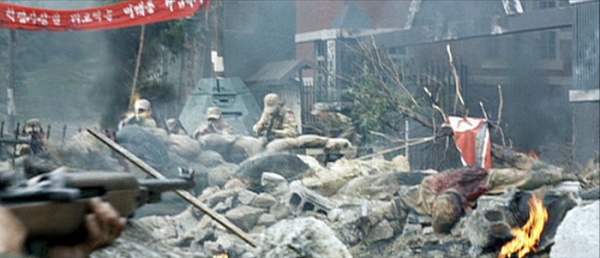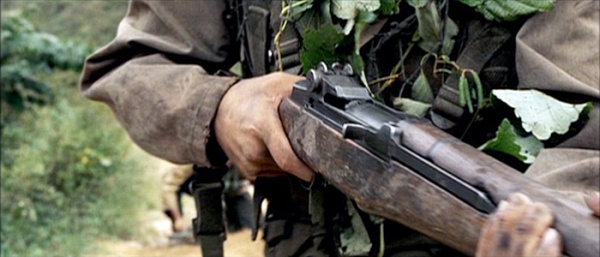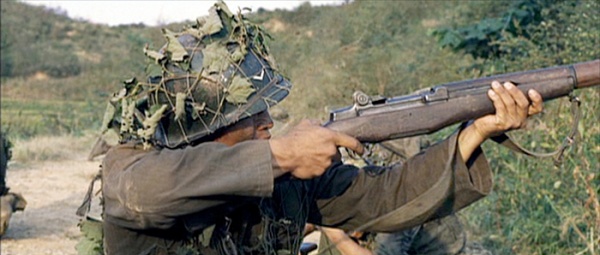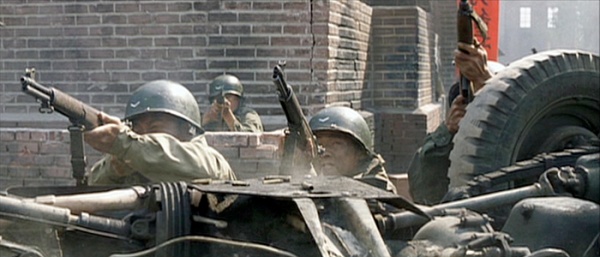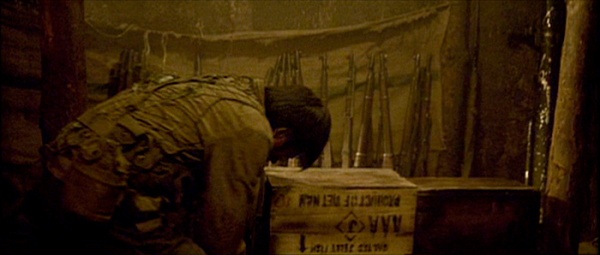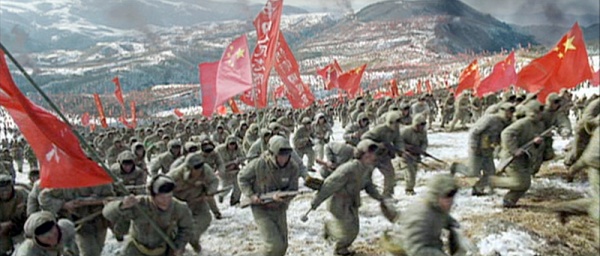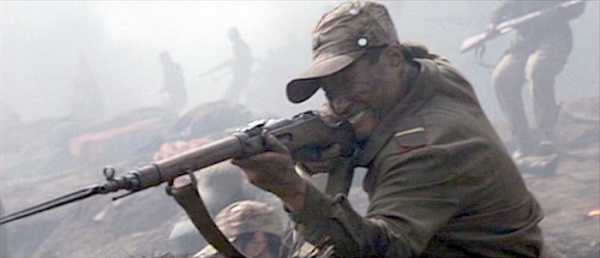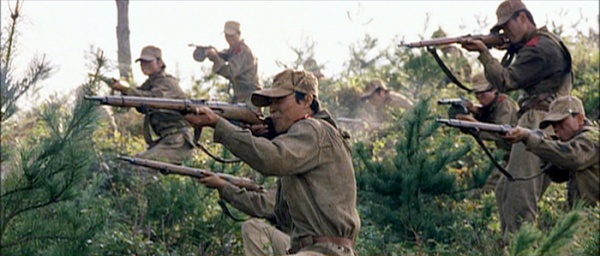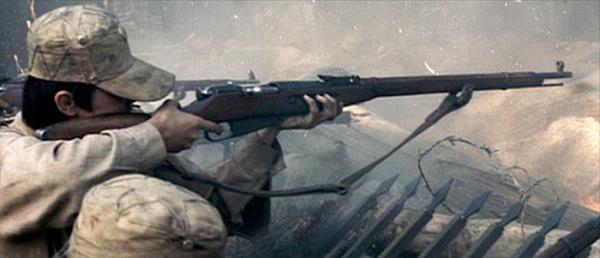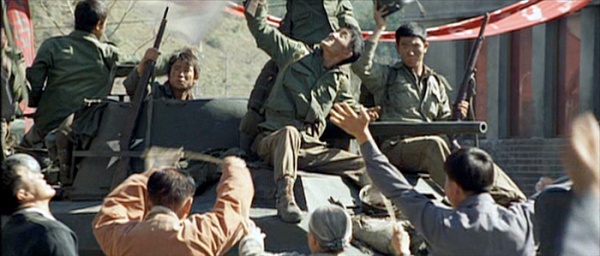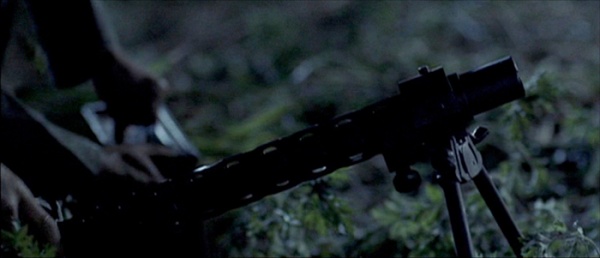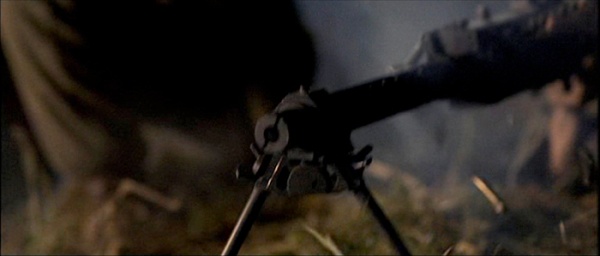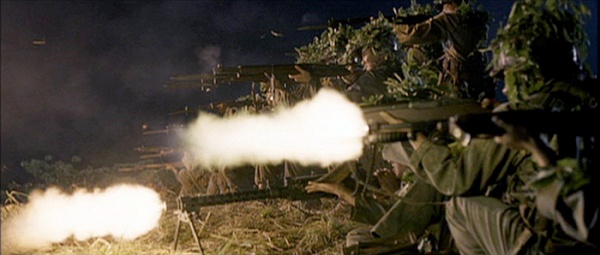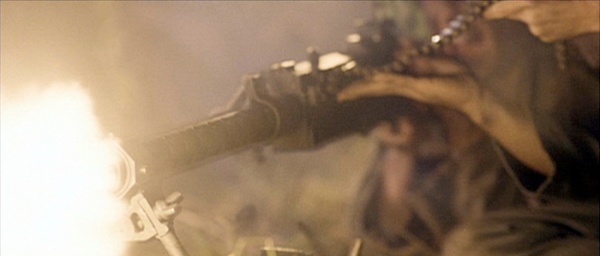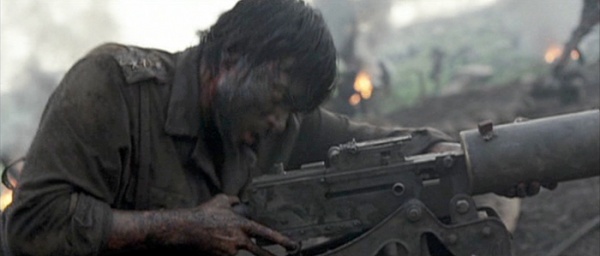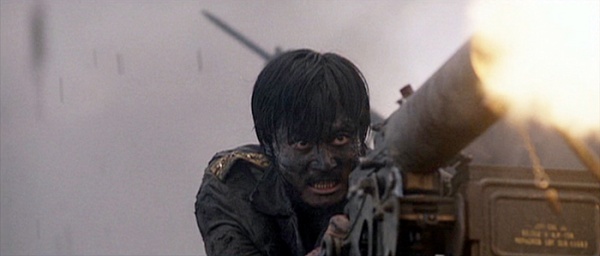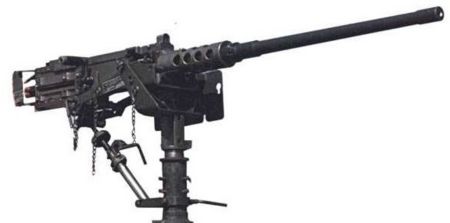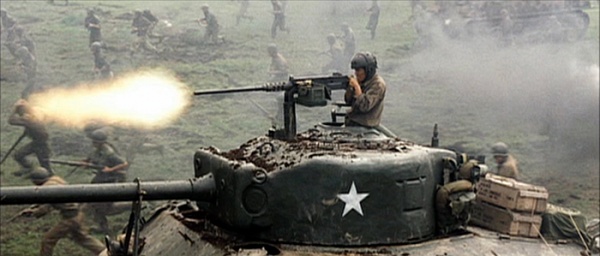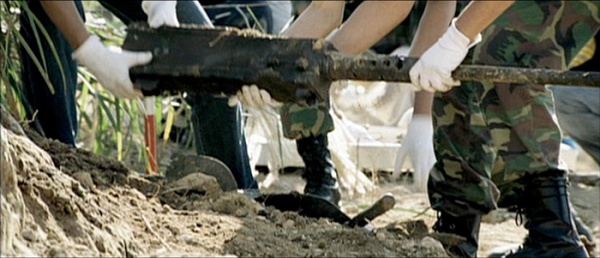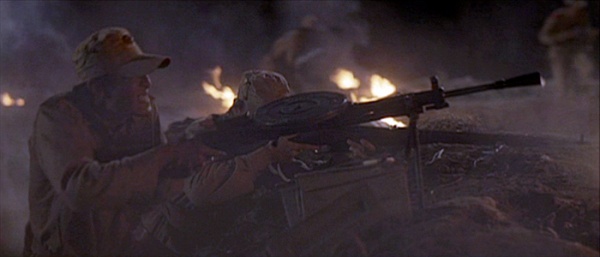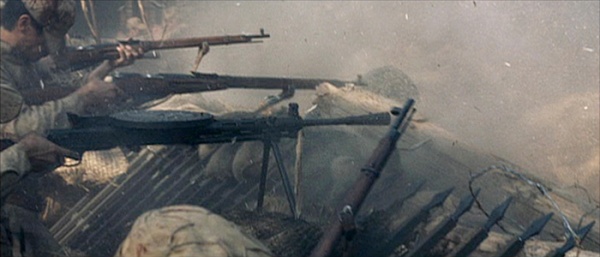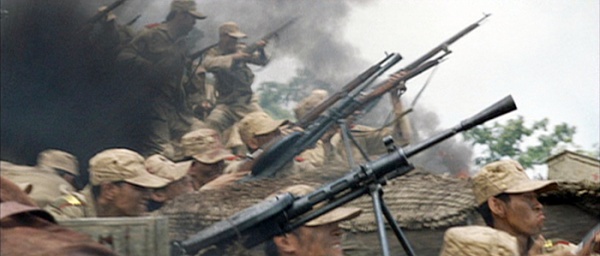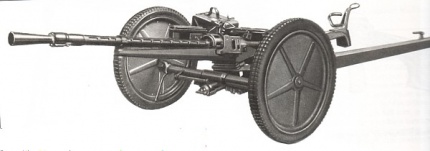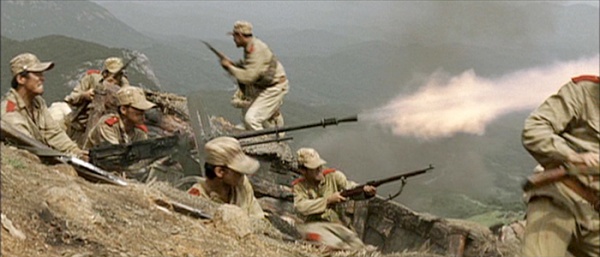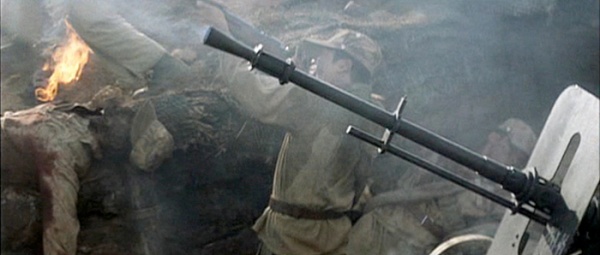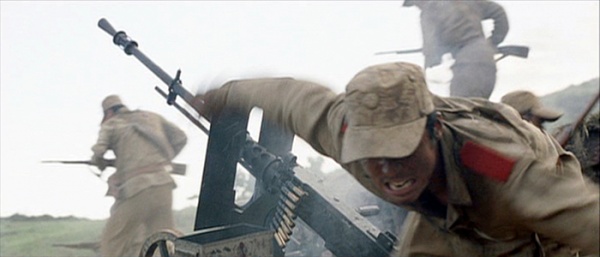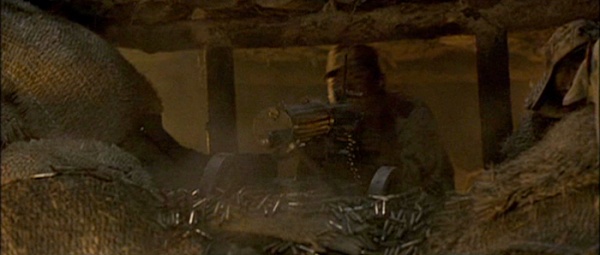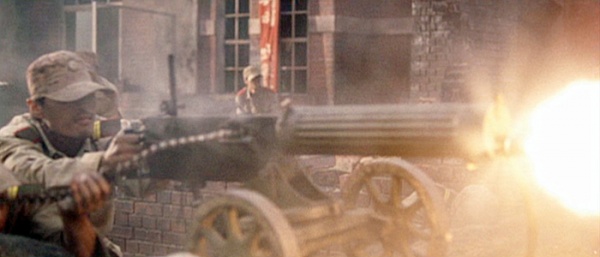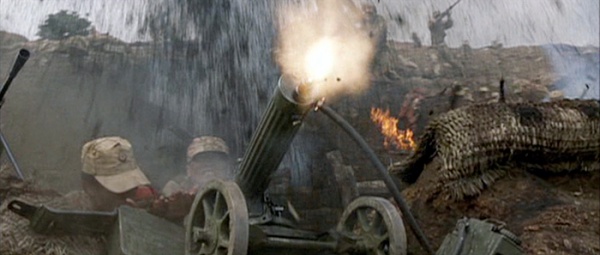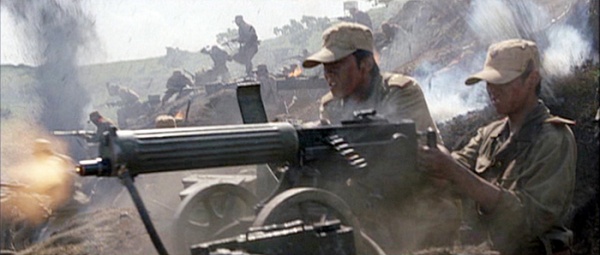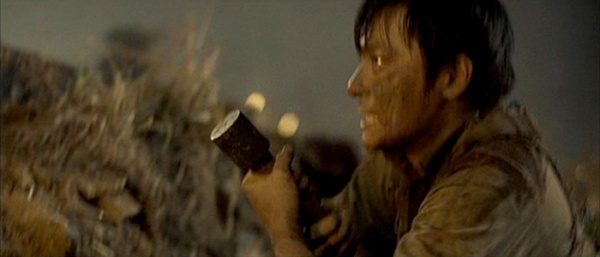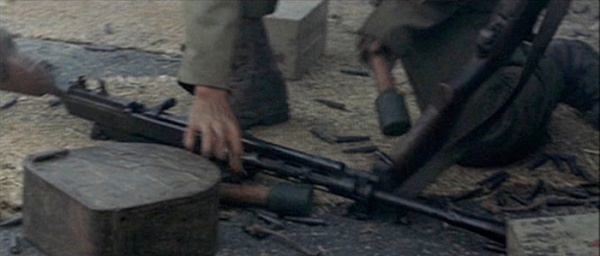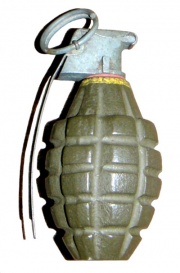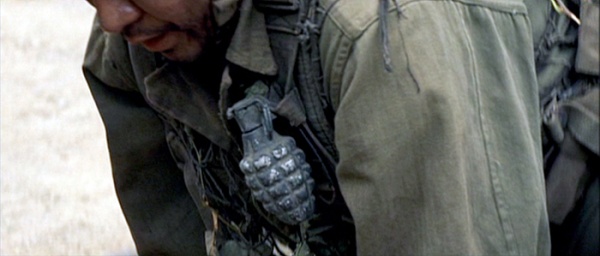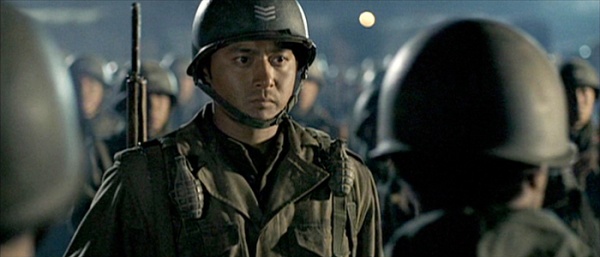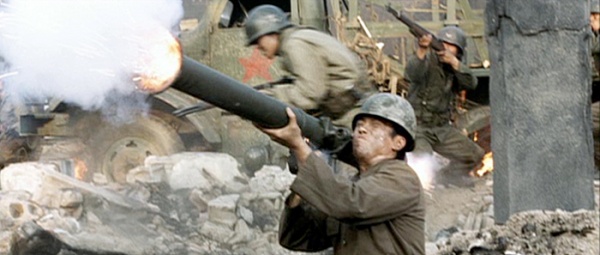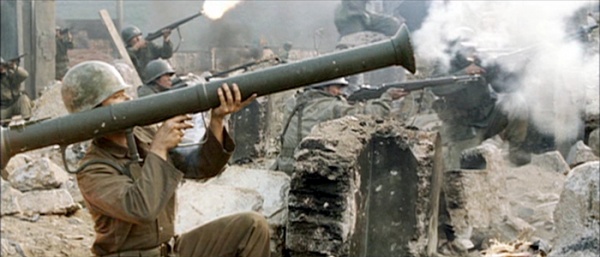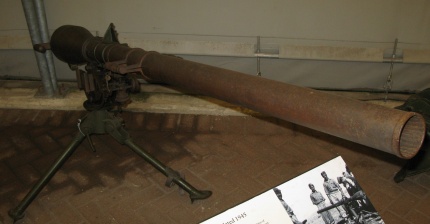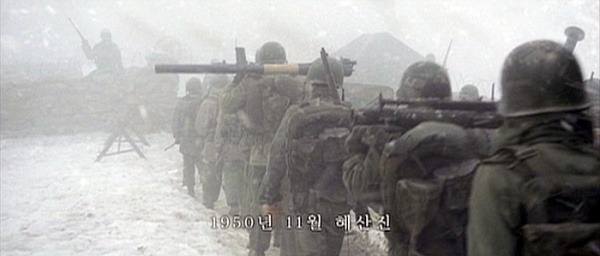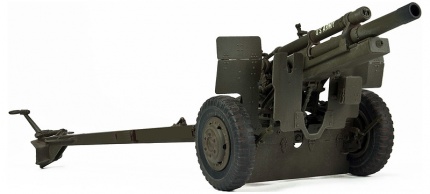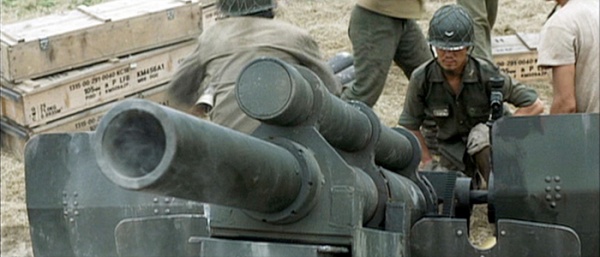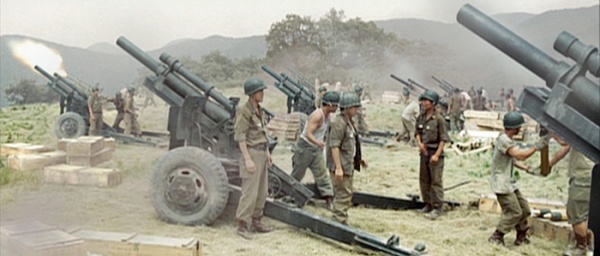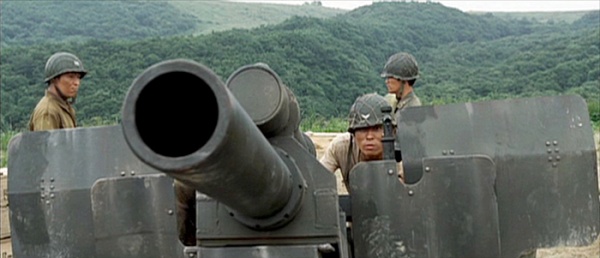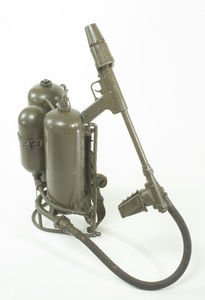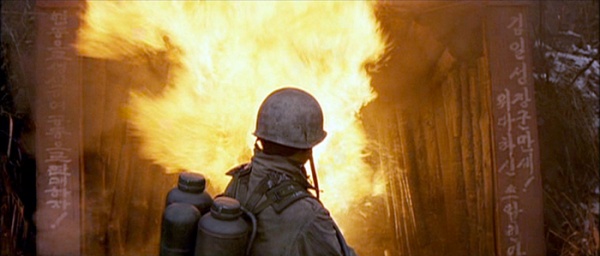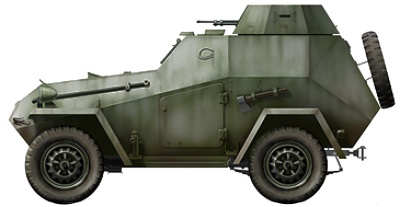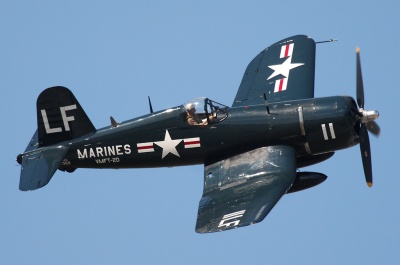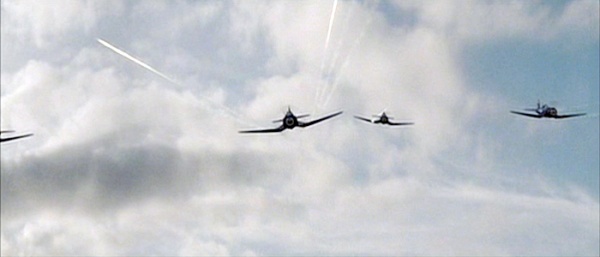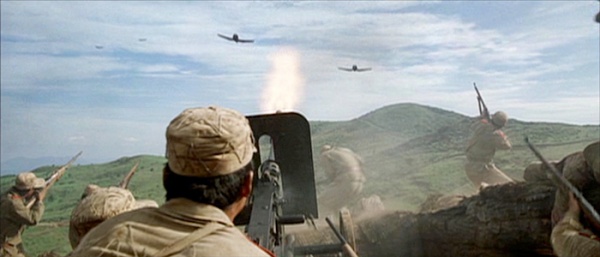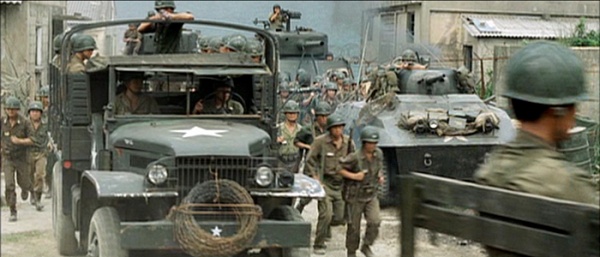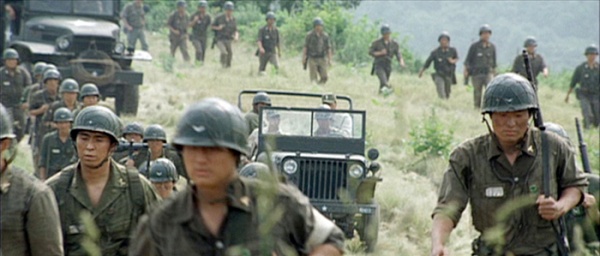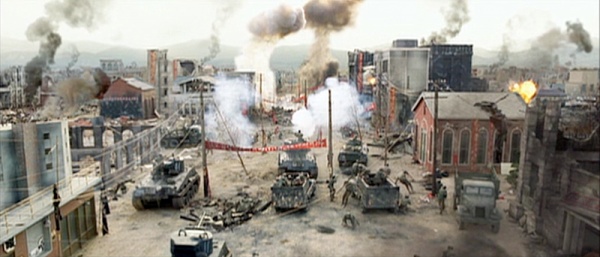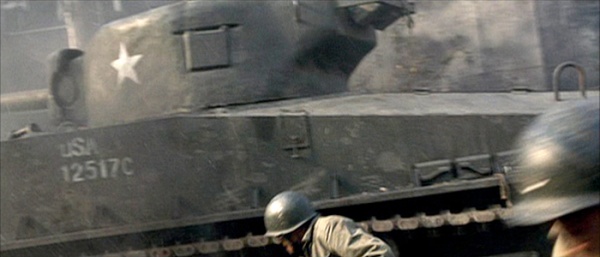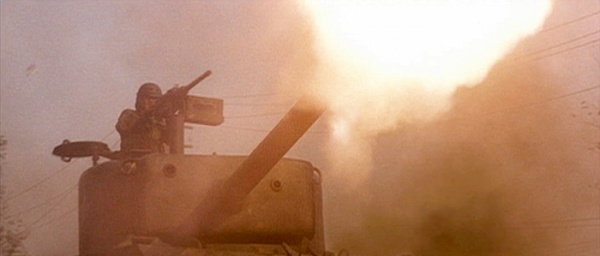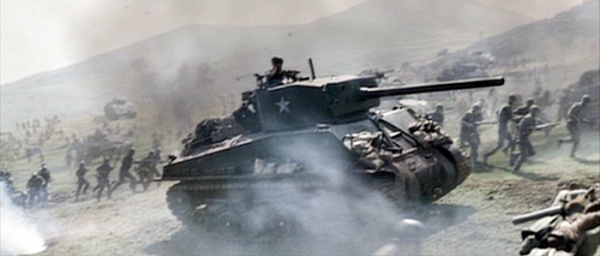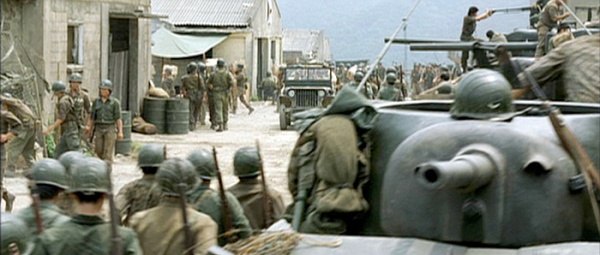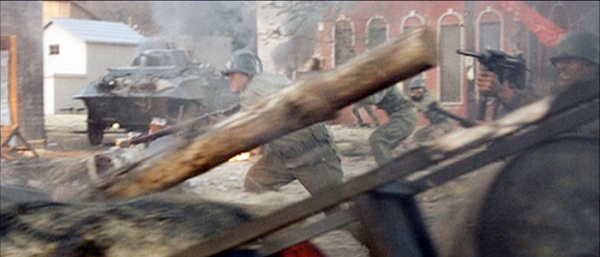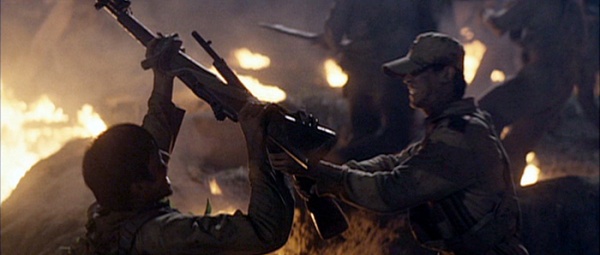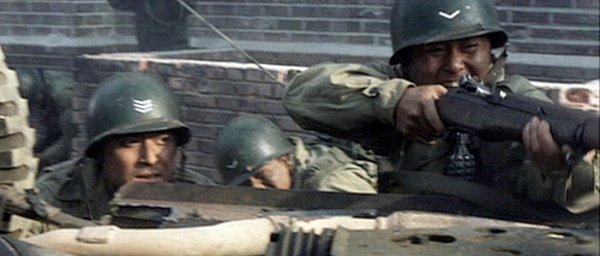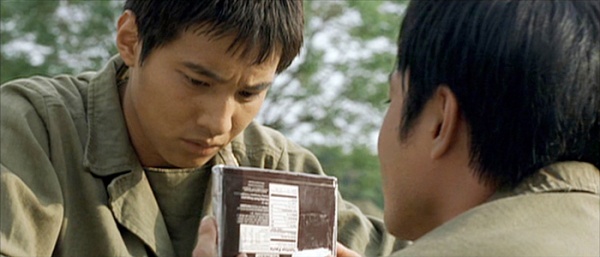| If you have been locked out of your account you can request a password reset here. |
Difference between revisions of "Tae Guk Gi: The Brotherhood of War"
m |
|||
| (One intermediate revision by one other user not shown) | |||
| Line 2: | Line 2: | ||
'''Tae Guk Gi: The Brotherhood of War''' is a 2004 epic Korean War film, directed by South Korean director Je-gyu Kang. It also known under the British title: '''Brotherhood''' and under the US DVD title: '''Tae Guk Gi: The Brotherhood of War'''. It proved to be a bestseller in Korea and a moderate performer overseas, becoming one of the highest-selling South Korean films of all time. In Asian cinema, this title was widely seen as South Korea's own ''[[Saving Private Ryan]]'' reflecting the pain and anguish of the Korean people, but also showcasing epic Korean War battle sequences, bringing attention to what has long been deemed "The Forgotten War" outside of the Korean Peninsula. | '''Tae Guk Gi: The Brotherhood of War''' is a 2004 epic Korean War film, directed by South Korean director Je-gyu Kang. It also known under the British title: '''Brotherhood''' and under the US DVD title: '''Tae Guk Gi: The Brotherhood of War'''. It proved to be a bestseller in Korea and a moderate performer overseas, becoming one of the highest-selling South Korean films of all time. In Asian cinema, this title was widely seen as South Korea's own ''[[Saving Private Ryan]]'' reflecting the pain and anguish of the Korean people, but also showcasing epic Korean War battle sequences, bringing attention to what has long been deemed "The Forgotten War" outside of the Korean Peninsula. | ||
| − | The story, told in retrospective from a Korean War veteran, follows the experiences of two brothers who survived World War 2 and the waning years of the [ | + | The story, told in retrospective from a Korean War veteran, follows the experiences of two brothers who survived World War 2 and the waning years of the [https://en.wikipedia.org/wiki/Korea_under_Japanese_rule Japanese occupation of Korea], only to be plunged into the madness and chaos of the Korean War (1950-1953). Two brothers are tricked into 'enlisting' by boarding the wrong railroad car and are not allowed to return home to take care of their family. The older brother Jin-tae Lee ([[Dong-gun Jang]]) volunteers for all of the dangerous missions he can get, committed to win the Korean equivalent of the Medal of Honor (a loophole in Korean Military rules allowed a winner of such a medal to send his siblings home). However, upon winning the Medal, the younger brother Jin-seok Lee ([[Bin Won]]) refuses to return home. Horrified at the realization that Jin-tae no longer fights to help their family, but fights because he enjoys killing, the increasingly chaotic tides of war will challenge both the relationship between the brothers and their relationship to their country. |
| − | + | {{Film Title}} | |
=Handguns= | =Handguns= | ||
| Line 44: | Line 44: | ||
[[Image:M1CarbineLateModel.jpg|thumb|none|450px|Korean War Era M1 Carbine - .30 Carbine]] | [[Image:M1CarbineLateModel.jpg|thumb|none|450px|Korean War Era M1 Carbine - .30 Carbine]] | ||
[[Image:TGK-M1CarbinePatrolA.jpg|thumb|none|600px|Jin-tae Lee's squad plants landmines on a road, while some soldiers of the squad standing guard carry M1 Carbines.]] | [[Image:TGK-M1CarbinePatrolA.jpg|thumb|none|600px|Jin-tae Lee's squad plants landmines on a road, while some soldiers of the squad standing guard carry M1 Carbines.]] | ||
| − | [[Image:TGK-M1CarbinesFlyOverA.jpg|thumb|none|600px|South Korean soldiers celebrate the news of the successful landing of the | + | [[Image:TGK-M1CarbinesFlyOverA.jpg|thumb|none|600px|South Korean soldiers celebrate the news of the successful landing of the US Marines at Incheon, as American F-86 Sabres fly overhead. Visible are many M1 Carbines.]] |
[[Image:TGK-Continuity02a.jpg|thumb|none|600px|An M1 Carbine in an over-the-shoulder view can be seen in an easy-to-miss continuity error more fully explained in another section on this page.]] | [[Image:TGK-Continuity02a.jpg|thumb|none|600px|An M1 Carbine in an over-the-shoulder view can be seen in an easy-to-miss continuity error more fully explained in another section on this page.]] | ||
[[Image:TGK-M1CarbineExecuteA.jpg|thumb|none|600px|During the chaos of the Korean War, paranoia about communist sympathizers/collaborators in then-right-wing South Korea motivated [http://en.wikipedia.org/wiki/List_of_massacres_in_South_Korea several massacres] of civilians suspected of communist support, all without trial, and in some cases still without official recognition from the South Korean government. A scene in this film depicts some vigilantes driven by this paranoia using M1 Carbines to execute suspected communist sympathizers/collaborators in Seoul. These Carbines have the 30 round magazines issued after WWII, but are still M1 Carbines, not M2 Carbines, since they lack the selector switch.]] | [[Image:TGK-M1CarbineExecuteA.jpg|thumb|none|600px|During the chaos of the Korean War, paranoia about communist sympathizers/collaborators in then-right-wing South Korea motivated [http://en.wikipedia.org/wiki/List_of_massacres_in_South_Korea several massacres] of civilians suspected of communist support, all without trial, and in some cases still without official recognition from the South Korean government. A scene in this film depicts some vigilantes driven by this paranoia using M1 Carbines to execute suspected communist sympathizers/collaborators in Seoul. These Carbines have the 30 round magazines issued after WWII, but are still M1 Carbines, not M2 Carbines, since they lack the selector switch.]] | ||
| Line 58: | Line 58: | ||
===M1 Garand Blank Adapters=== | ===M1 Garand Blank Adapters=== | ||
| − | [[Image:TGK-M1GarandBFAsA.jpg|thumb|none|600px|Uniformed irregulars hold their M1 Garands on the head of Pvt. Jin-seok Lee (Won | + | [[Image:TGK-M1GarandBFAsA.jpg|thumb|none|600px|Uniformed irregulars hold their M1 Garands on the head of Pvt. Jin-seok Lee ([[Bin Won]]) when he intervenes in the summary execution of suspected communist sympathizers/collaborators during his brief mid-war return to Seoul - a personal stake he has in this situation is that one of those about to be executed is his brother's girlfriend. This close-up shot allows the particular blank adapters for the M1 Garand used in the film to be easily seen. They are externally-attachable BFAs that extend the end of the rifle by a 0.5 inch.]] |
==Mosin Nagant M38 Carbine== | ==Mosin Nagant M38 Carbine== | ||
| Line 100: | Line 100: | ||
==Browning M2HB== | ==Browning M2HB== | ||
| − | On the Allied side, the [[Browning M2]] heavy barrel machine guns are most commonly seen mounted on | + | On the Allied side, the [[Browning M2]] heavy barrel machine guns are most commonly seen mounted on US Army Sherman tanks. |
[[Image:BrowningM2.jpg|thumb|none|450px|Browning M2HB Machine Gun - .50 BMG]] | [[Image:BrowningM2.jpg|thumb|none|450px|Browning M2HB Machine Gun - .50 BMG]] | ||
[[Image:TGK-M2HBShermanA.jpg|thumb|none|600px|An American tanker fires a Sherman tank-mounted Browning M2HB.]] | [[Image:TGK-M2HBShermanA.jpg|thumb|none|600px|An American tanker fires a Sherman tank-mounted Browning M2HB.]] | ||
| Line 183: | Line 183: | ||
==F4U Corsair== | ==F4U Corsair== | ||
| − | The [http://en.wikipedia.org/wiki/Vought_F4U_Corsair F4U Corsair] is a turboprop plane commonly seen deployed for close air support in the film, most commonly seen using their 20mm cannons to strafe North Korean lines and entrenched soldiers. A critically-damaged F4U also makes its own "Kamikaze" run at a North Korean gun emplacement in the climactic battle. The World War II Vintage aircraft were used by the US Navy in support of ground operations in Korea until the North Koreans started using the MiG-15 Jet fighters. This effectively ended the F4U Corsair's involvement in the conflict as the | + | The [http://en.wikipedia.org/wiki/Vought_F4U_Corsair F4U Corsair] is a turboprop plane commonly seen deployed for close air support in the film, most commonly seen using their 20mm cannons to strafe North Korean lines and entrenched soldiers. A critically-damaged F4U also makes its own "Kamikaze" run at a North Korean gun emplacement in the climactic battle. The World War II Vintage aircraft were used by the US Navy in support of ground operations in Korea until the North Koreans started using the MiG-15 Jet fighters. This effectively ended the F4U Corsair's involvement in the conflict as the US Armed forces switched to their own designs of Jet aircraft. |
[[File:Vought F4U Corsair (USMC).jpg|thumb|none|400px|Vought F4U Corsair serving in close support - Main armament four 20mm cannons]] | [[File:Vought F4U Corsair (USMC).jpg|thumb|none|400px|Vought F4U Corsair serving in close support - Main armament four 20mm cannons]] | ||
[[Image:TKG-CorsairsStrafeA.jpg|thumb|none|600px|F4U Corsairs strafe North Korean positions.]] | [[Image:TKG-CorsairsStrafeA.jpg|thumb|none|600px|F4U Corsairs strafe North Korean positions.]] | ||
| Line 221: | Line 221: | ||
==Anachronisms== | ==Anachronisms== | ||
| − | In one scene, Jin-tae Lee ([[Dong-gun Jang]]) gives his dejected brother Jin-seok Lee (Won | + | In one scene, Jin-tae Lee ([[Dong-gun Jang]]) gives his dejected brother Jin-seok Lee ([[Bin Won]]) a Hershey's chocolate bar to cheer him up after their first mission together. However, the candy bar in the scene is the "King-sized version" that Hershey introduced in 1980, nearly thirty years after the Korean War. The anachronistic 'nutritional content listings' on the back of the bar (introduced in the 1990s to combat overconsumption of junk food) are also visible, as is the bar code (which would require the invention of bar code readers, along with their associated "precursor" technologies such as microchips, scanners, and the necessary software programming, to be useful). |
[[Image:TGK-HersheysChocolateA.jpg|thumb|none|600px|Jin-tae Lee offers his brother a 21st-century chocolate bar in a scene set in 1950.]] | [[Image:TGK-HersheysChocolateA.jpg|thumb|none|600px|Jin-tae Lee offers his brother a 21st-century chocolate bar in a scene set in 1950.]] | ||
Revision as of 13:50, 30 May 2020
Tae Guk Gi: The Brotherhood of War is a 2004 epic Korean War film, directed by South Korean director Je-gyu Kang. It also known under the British title: Brotherhood and under the US DVD title: Tae Guk Gi: The Brotherhood of War. It proved to be a bestseller in Korea and a moderate performer overseas, becoming one of the highest-selling South Korean films of all time. In Asian cinema, this title was widely seen as South Korea's own Saving Private Ryan reflecting the pain and anguish of the Korean people, but also showcasing epic Korean War battle sequences, bringing attention to what has long been deemed "The Forgotten War" outside of the Korean Peninsula.
The story, told in retrospective from a Korean War veteran, follows the experiences of two brothers who survived World War 2 and the waning years of the Japanese occupation of Korea, only to be plunged into the madness and chaos of the Korean War (1950-1953). Two brothers are tricked into 'enlisting' by boarding the wrong railroad car and are not allowed to return home to take care of their family. The older brother Jin-tae Lee (Dong-gun Jang) volunteers for all of the dangerous missions he can get, committed to win the Korean equivalent of the Medal of Honor (a loophole in Korean Military rules allowed a winner of such a medal to send his siblings home). However, upon winning the Medal, the younger brother Jin-seok Lee (Bin Won) refuses to return home. Horrified at the realization that Jin-tae no longer fights to help their family, but fights because he enjoys killing, the increasingly chaotic tides of war will challenge both the relationship between the brothers and their relationship to their country.
The following weapons were used in the film Tae Guk Gi: The Brotherhood of War:
Handguns
Colt M1911A1
The Colt M1911A1 is the standard-issue handgun for the American-supplied South Korean forces, both historically and in the film.
Nambu Type 14
A Japanese handgun of the WWII era, the Nambu Type 14 is seen in the hands of a North Korean captain who in one sequence tries to escape the South Korean forces during the October 1950 battle of Pyongyang, and then is subsequently chased down and captured by a glory-hungry Jin-tae Lee. While seemingly out-of-place at first glance among the Soviet-supplied North Koreans, the Japanese military did in fact conscript Koreans into their military during WWII before the Japanese occupation of Korea ended, and this weapon could well be a physical remnant of that period.
Submachine Guns
M3A1 Grease Gun
The M3A1 Grease Gun is infrequently seen amongst South Korean soldiers in the film.
PPSh-41
Produced by the millions by the Soviets for their "Great Patriotic War" (the Soviet term for WWII), it is no surprise that by WWII's end they still had enough PPSh-41 submachine guns to generously equip their various client states for the opening years of the Cold War. In this film, the PPSh-41 is a common sight amongst North Korean soldiers.
Rifles/Carbines
Browning Automatic Rifle
The most common American-issued light machine gun in WWII, the Browning Automatic Rifle is infrequently seen amongst South Korean forces in this film.
M1 Carbine
The standard-issue carbine for the American-supplied forces of South Korea, the M1 Carbine in the Korean War fulfilled the same role it played in WWII-being issued to second-line troops and those expected to see short-range combat.
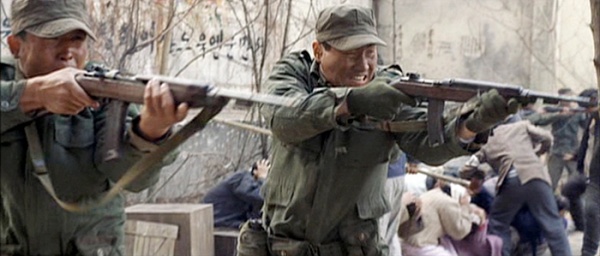
M1 Garand
As was the case in WWII only five years prior, the M1 Garand remained the standard-issue rifle for the American-supplied forces of South Korea, and it is an ubiquitous sight in scenes in this film featuring South Korean infantry.
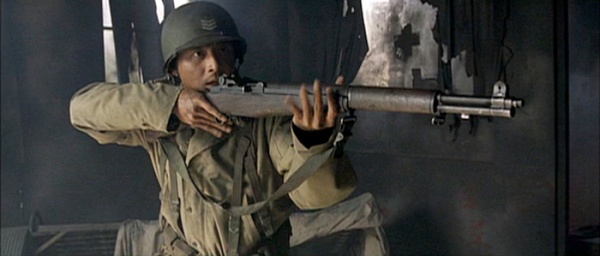
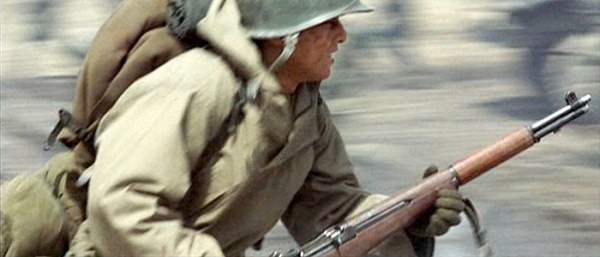
M1 Garand Blank Adapters
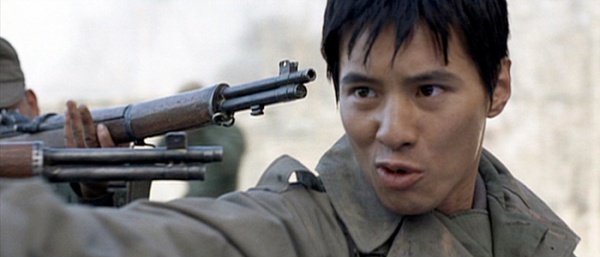
Mosin Nagant M38 Carbine
A carbine-length variant of the ubiquitous Mosin Nagant rifle, the M38 Carbine is occasionally seen in the film, primarily in the hands of the Chinese troops sent to intervene in North Korea by October 1950.
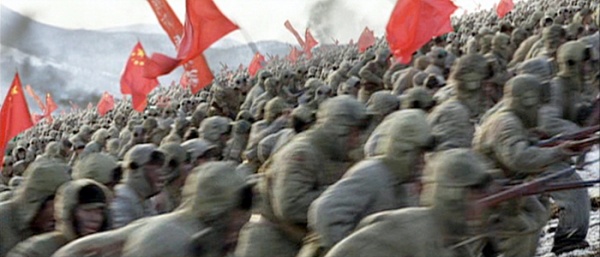
Mosin Nagant M44 Carbine
Another carbine-length variant of the long-serving Mosin Nagant rifle, the M44 Carbine makes occasional appearances in this film, primarily among the intervening Chinese troops arriving to the war in October 1950.
Mosin Nagant M91/30
The standard-issue Soviet rifle in WWII, the Mosin Nagant M91/30 "reprises" its role in this film as the standard-issue rifle amongst the Soviet-supplied North Korean troops.
M1903A4 Springfield
A South Korean soldier riding on an American tank in this film is seen with an M1903A4 Springfield sniper rifle, but without a scope.
Machine Guns
Browning M1919A6
Browning M1919A6 machine guns are used by South Korean troops as belt-fed light machine guns in this film, taking a page from their American military suppliers.
Browning M1917
A Browning M1917 makes an appearance in the film. It is most prominently used by a recently-crazed Sgt. Jin-tae Lee (Dong-gun Jang) during the climactic battle.
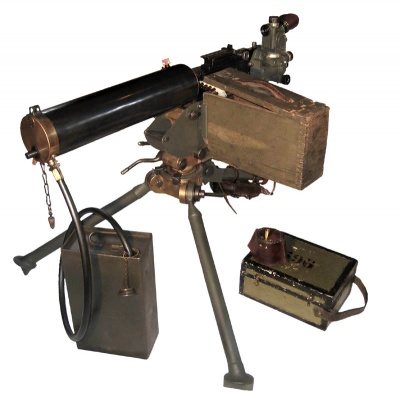
Browning M2HB
On the Allied side, the Browning M2 heavy barrel machine guns are most commonly seen mounted on US Army Sherman tanks.
Browning AN/M2
The rusted remnants of a Browning AN/M2 heavy machine gun are excavated by archeologists and South Korean soldiers at a battle site in 2003.
Degtyaryov DP-28
The standard-issue Soviet light machine gun from WWII and widely issued to Soviet client states in the early years of the Cold War, the Soviet DP-28 makes an appearance in the hands of many North Korean soldiers in this film. These differ from the more common DPM by the lack of a pistol grip, a differently shaped stock, and a bipod that mounts below, not above, the heat jacket of the barrel.
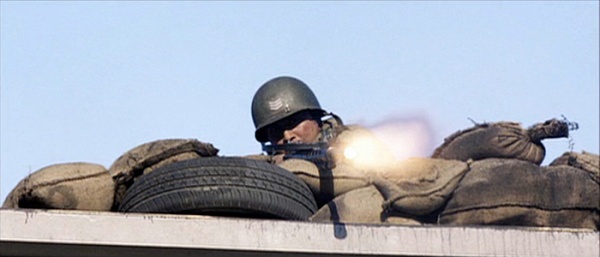
Fake Soviet KPV Heavy Machine Gun
A mockup of an anti-aircraft gun, that resembles a cross between the 14.5mm KPV heavy machine gun and the 12.7mm NSV heavy machine gun is made from a disguised Browning M2HB. M2 machine guns are commonly used to impersonate foreign heavy machine guns like in Rambo III and The Beast of War.
Maxim M1910/30
A Soviet-updated version of the venerable water-cooled Maxim heavy machine gun, the Maxim M1910/30 machine gun makes an appearance amidst North Korean forces in this film in its "Sokolov" wheeled mounting. Historically, this machine gun was widely used by Russian/Soviet forces in World Wars One and Two, and also used by their client states in the opening years of the Cold War.
Grenades
Type 67 Stick Grenade
The Chinese Type 67 stick grenade is used by various North Korean soldiers in the course of the film. It is also commandeered by various South Korean soldiers against their former owners as well.
Mk 2 Hand Grenade
The standard-issue WWII hand grenade used by US forces and their allies in the Cold War, the Mk 2 hand grenade is frequently seen used by Jin-tae Lee and other South Korean soldiers in the film.
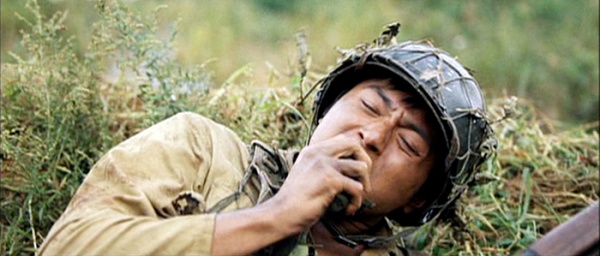
Launchers
M20B1 "Super Bazooka"
The M20B1 "Super Bazooka" rocket launcher is used in this film, seen most prominently during the Pyongyang battle sequence.
M20 Recoilless Rifle
The M20 Recoilless Rifle is seen in the film, but is never fired onscreen.
Artillery
M101 Howitzer
The M101 Howitzer is seen in the film during scenes depicting them providing artillery fire support.
Others
M2 Flamethrower
An American WWII-issue flamethrower, the M2 Flamethrower appears in the film. It is most prominently seen during a sequence in which the brothers' unit clears abandoned communist positions and use the flamethrower to flush out potential enemy hiding spots.
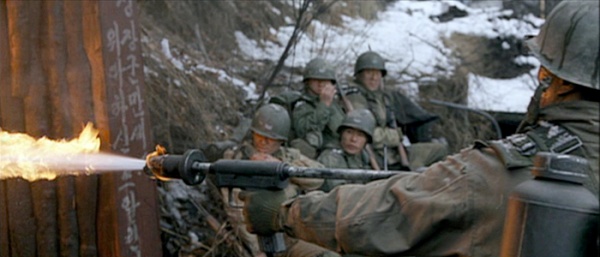
Vehicles
Normally IMFDB does not list vehicles unless they are associated with being gun platforms, either as field modifications or from the factory. So in the case of most films, civilian cars and trucks are not eligible for listing, but many military vehicles are.
BA-64 Armored Car
The BA-64 Armored Car was a Soviet-made vehicle used during WW2, and used by North Korean forces in the film. Its main armament was a 7.62mm DT machine gun with 1260 rounds, mounted inside the top turret.
F4U Corsair
The F4U Corsair is a turboprop plane commonly seen deployed for close air support in the film, most commonly seen using their 20mm cannons to strafe North Korean lines and entrenched soldiers. A critically-damaged F4U also makes its own "Kamikaze" run at a North Korean gun emplacement in the climactic battle. The World War II Vintage aircraft were used by the US Navy in support of ground operations in Korea until the North Koreans started using the MiG-15 Jet fighters. This effectively ended the F4U Corsair's involvement in the conflict as the US Armed forces switched to their own designs of Jet aircraft.
GMC Truck
An American GMC truck can be seen in the film.
M38 Jeep
An American M38 Jeep, first used in the Korean War.
M4A3E2 Sherman Jumbo Tank
A post-WWII version of the M4 Sherman tank with a much more squared turret. The main gun of the version used in the Korean War is the elongated 76mm variant rather than the shorter 75mm guns of WW2.
M8 Greyhound Armored Car
Constantly seen backing up the Sherman tanks during armored attacks.
Trivia
Dummy stunt rifles
Since there are so much hand-to-hand combats in the film, the filmmakers made lightweight dummy Garands and Mosin Nagant Carbines out of wood and metal parts. In close-up their fake natures are obvious (the fact that the actors swing them around like they weigh nothing is also a clue). The Russian Carbines are odd looking and looks like a hybrid M91/30 and an M38/44 Carbine.
Continuity Error
When PFC Yong-man (Hyung-jin Gong) participates in the Pyongyang battle sequence, he has an M1 Garand, but when we see over his shoulder in a brief shot, the gun is an M1 Carbine.
Anachronisms
In one scene, Jin-tae Lee (Dong-gun Jang) gives his dejected brother Jin-seok Lee (Bin Won) a Hershey's chocolate bar to cheer him up after their first mission together. However, the candy bar in the scene is the "King-sized version" that Hershey introduced in 1980, nearly thirty years after the Korean War. The anachronistic 'nutritional content listings' on the back of the bar (introduced in the 1990s to combat overconsumption of junk food) are also visible, as is the bar code (which would require the invention of bar code readers, along with their associated "precursor" technologies such as microchips, scanners, and the necessary software programming, to be useful).
